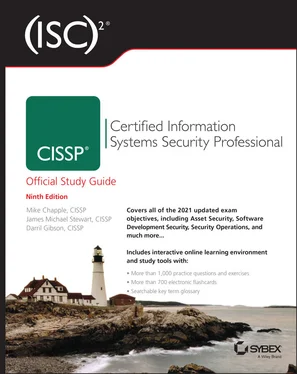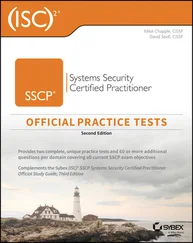Planning for Business Continuity
Business continuity planning (BCP) involves assessing the risks to organizational processes and creating policies, plans, and procedures to minimize the impact those risks might have on the organization if they were to occur. BCP is used to maintain the continuous operation of a business in the event of an emergency. The goal of BCP planners is to implement a combination of policies, procedures, and processes such that a potentially disruptive event has as little impact on the business as possible.
BCP focuses on maintaining business operations with reduced or restricted infrastructure capabilities or resources. As long as the continuity of the organization's ability to perform its mission-critical work tasks is maintained, BCP can be used to manage and restore the environment.
Business Continuity Planning vs. Disaster Recovery Planning
CISSP candidates often become confused about the difference between business continuity planning (BCP) and disaster recovery planning (DRP). They might try to sequence them in a particular order or draw firm lines between the two activities. The reality of the situation is that these lines are blurry in real life and don't lend themselves to neat and clean categorization.
The distinction between the two is one of perspective. Both activities help prepare an organization for a disaster. They intend to keep operations running continuously, when possible, and recover functions as quickly as possible if a disruption occurs. The perspective difference is that business continuity activities are typically strategically focused at a high level and center themselves on business processes and operations. Disaster recovery plans tend to be more tactical and describe technical activities such as recovery sites, backups, and fault tolerance.
In any event, don't get hung up on the difference between the two. We've yet to see an exam question force anyone to draw a solid line between the two activities. It's much more important that you understand the processes and technologies involved in these two related disciplines.
You'll learn more about disaster recovery planning in Chapter 18.
The overall goal of BCP is to provide a quick, calm, and efficient response in the event of an emergency and to enhance a company's ability to recover from a disruptive event promptly. The BCP process has four main steps:
Project scope and planning
Business impact analysis
Continuity planning
Approval and implementation
The next four sections of this chapter cover each of these phases in detail. The last portion of this chapter will introduce some of the critical elements you should consider when compiling documentation of your organization's business continuity plan.
 The top priority of BCP and DRP is always people . The primary concern is to get people out of harm's way; then you can address IT recovery and restoration issues.
The top priority of BCP and DRP is always people . The primary concern is to get people out of harm's way; then you can address IT recovery and restoration issues.
Project Scope and Planning
As with any formalized business process, the development of a resilient business continuity plan requires the use of a proven methodology. Organizations should approach the planning process with several goals in mind:
Perform a structured review of the business's organization from a crisis planning point of view.
Create a BCP team with the approval of senior management.
Assess the resources available to participate in business continuity activities.
Analyze the legal and regulatory landscape that governs an organization's response to a catastrophic event.
The exact process you use will depend on the size and nature of your organization and its business. There isn't a “one-size-fits-all” guide to business continuity project planning. You should consult with project planning professionals in your organization and determine the approach that will work best within your organizational culture.
The purpose of this phase is to ensure that the organization dedicates sufficient time and attention to both developing the project scope and plan and then documenting those activities for future reference.
One of the first responsibilities of the individuals responsible for business continuity planning is to perform an analysis of the business organization to identify all departments and individuals who have a stake in the BCP process. Here are some areas to consider:
Operational departments that are responsible for the core services the business provides to its clients
Critical support services, such as the IT department, facilities and maintenance personnel, and other groups responsible for the upkeep of systems that support the operational departments
Corporate security teams responsible for physical security, since they are many times the first responders to an incident and are also responsible for the physical safeguarding of the primary facility and alternate processing facility
Senior executives and other key individuals essential for the ongoing viability of the organization
This identification process is critical for two reasons. First, it provides the groundwork necessary to help identify potential members of the BCP team (see the next section). Second, it builds the foundation for the remainder of the BCP process.
Typically, the individuals spearheading the BCP effort perform the business organization analysis. Some organizations employ a dedicated business continuity manager to lead these efforts, whereas others treat it as a part-time responsibility for another IT leader. Either approach is acceptable because the output of the analysis commonly guides the selection of the remaining BCP team members. However, a thorough review of this analysis should be one of the first tasks assigned to the full BCP team when it convenes. This step is critical because the individuals performing the initial analysis may have overlooked critical business functions known to BCP team members that represent other parts of the organization. If the team were to continue without revising the organizational analysis, the entire BCP process might be negatively affected, resulting in the development of a plan that does not fully address the emergency-response needs of the organization as a whole.
 When developing a business continuity plan, be sure to consider the location of both your headquarters and any branch offices. The plan should account for a disaster that occurs at any location where your organization conducts its business, including your own physical locations and those of your cloud service providers.
When developing a business continuity plan, be sure to consider the location of both your headquarters and any branch offices. The plan should account for a disaster that occurs at any location where your organization conducts its business, including your own physical locations and those of your cloud service providers.
In some organizations, the IT and/or security departments bear sole responsibility for business continuity planning, and no other operational or support departments provide input. Those departments may not even know of the plan's existence until a disaster looms on the horizon or actually strikes the organization. This is a critical flaw! The isolated development of a business continuity plan can spell disaster in two ways. First, the plan itself may not take into account knowledge possessed only by the individuals responsible for the day-to-day operation of the business. Second, it keeps operational elements “in the dark” about plan specifics until implementation becomes necessary. These two factors may lead to disengaged units disagreeing with provisions of the plan and failing to implement it properly. They also deny organizations the benefits achieved by a structured training and testing program for the plan.
Читать дальше

 The top priority of BCP and DRP is always people . The primary concern is to get people out of harm's way; then you can address IT recovery and restoration issues.
The top priority of BCP and DRP is always people . The primary concern is to get people out of harm's way; then you can address IT recovery and restoration issues.










